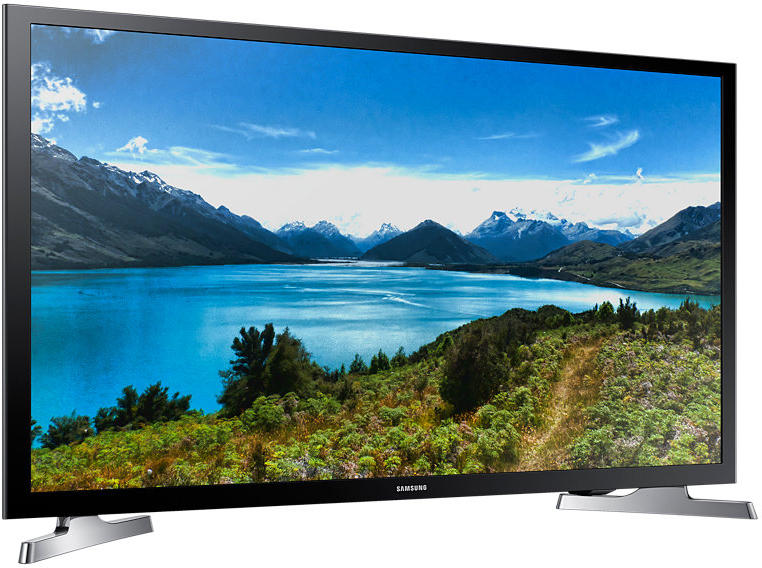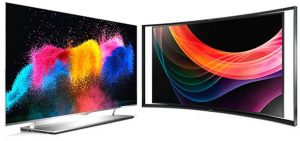
Television Buying Guide

Buying a television is no longer a simple affair. The sheer variety not just in terms of brands but also in terms of the different types of television means that you have to be prepared for a long stint at the dealer outlets looking through a couple of dozen models before, hopefully, finding the one that suits you the best.
However, you could save yourself some time by knowing what components you need to look out for when you choose a television. Some of the important elements of a Television that need to be taken into consideration are:
SCREEN SIZE
This is one thing you need to be very clear about. The screen size is largely dependent on the size of your room. The screen size of a TV is always measured diagonally, and ranges from 14 up to 71 inches. To know the exact size of the display screen, remove another inch or so from the published screen size.
The screen size is also one of the most important determinants of the price of the television.
SCREEN FLATNESS
With so many variants in the market, you can choose from Regular, which is the old style curved screen, semi flat, truly flat, plasma or projection and LCD. Each of these have a certain range of screen sizes and it is the combination of the flatness of the screen and the screen size that determines how high or low your TV is priced.
Regular
The standard TV screen is curved. The picture tube, here is conventional, without any special modifications to it. . It has all the normal features like adjustable color, contrast and brightness. Other features include auto programming, super and hyper band tuner, timer, DVD/LD/VCD compatibility, child lock and a host of others features. However, a drawback of the regular screens is that the natural curve of the screen will pick up light sources throughout the room. The prices of these models range from about Rs 3,800 to Rs 16,300. If you are looking at absolute budget buying then these are ideal. These also have the charm of being old world, as most of has grown up watching these.
Semi flat
Typically, flatter the screen better the view. A Semi Flat TV includes the FST (Flat Square Tube) and the FFST (Full Flat Square Tube). FST is flatter compared to the conventional picture tube and the FFST is even flatter than FST. However, neither are absolutely flat. Flatness of the picture tube is good because it considerably reduces reflections and glare from light sources in the room resulting in consistent and easy to watch pictures. Although, try not to place lamps and highly reflective objects close by. Nearby windows should also be blocked for better viewing. The prices of these models range from about Rs 5,000 to Rs 15, 490. This is a healthy compromise. It gives you an almost flat feel at very affordable prices.
Truly flat
The Truly flat tubes have a completely flat screen. A truly flat TV is of three types – Flat, Super Flat and True Flat televisions. The Truly Flat TVs reduce the glare and give a wider viewing angle, without any distortions and thus provide a better viewing experience. The price for these start at Rs 4,500 and could be as high as Rs 1,20,000. This is the kind of television that could even double up as an accessory in your living room. Stylish looking, with a host of features, this for those obsessed with quality and don’t mind spending the extra few bucks for it
Cathode Ray TVs
CRT televisions are the traditional type of televisions that people have had in their homes for many years. CRT televisions encompass traditional Cathode Ray Tube technology and the 4:3 ratio ‘square’ screen image. Screen sizes range from 14 inches to 30 inches.
Conventional Televisions use a Cathode Ray Tube (CRT) to show pictures.
A CRT uses electron rays to bombard a group of red, green and blue phosphor dots on to the screen to create the picture. The CRTs used today aren’t that different to those used in the early television sets.
Plasma and projection TVs
Plasma displays are screens that are perfectly flat and very thin with zero curvature. Being absolutely flat these provide perfect focus, no distortion, and eliminate glare making them good for the eyes. While the projection TVs give you a theatre-like experience within the ambience of your home. They have large screens and are available in two types: front and rear projection. The size of your room is very crucial to the buying of this set, as it needs a certain distance to be maintained between you and the screen. Rear Projection TVs provide excellent viewing from any angle.
Front Projection TVs are not available in the Indian market at present. These come with a separate screen and a projector. For movie buffs, this is worth the investment though.
LCD (Liquid Crystal Display)
LCD is a new technology that works on the principle of blocking light rather than emitting it. An LCD consists primarily of two glass plates with some liquid crystal material between them, which gets rid of the bulky picture tube.
Main advantages of LCD technology lies in the reduction of weight and power consumption, making LCD TVs a practical, though slightly expensive option.
DLP (Digital Light Projection)
DLP technology is based on a semiconductor chip called a Digital Micro mirror Device (DMD). This chip has a matrix of microscopic sized mirrors, each one representing a pixel, which tilt to reflect, or not reflect light. Depending on the how quickly these mirrors re-position themselves, the DMD chip can recreate 1,024 shades of gray.
Color is added by placing a color wheel in front of this microscopic light show that is divided into 4 sectors: red, green, blue, and one clear sector toboost brightness. This color wheel is synchronized with the DMD to display each color so quickly that each color appears to combine and form one composite, full-color image.
OLED (Organic LED or Organic Light Emitting Diode)

OLED TVs use a new display technology called OLED (Organic Light Emitting Diodes). OLED televisions will be brighter, more efficient, thinner and with better refresh rates and contrast than LCD or Plasma TVs.
OLEDs are made by placing a series of organic thin films between two conductors. When electrical current is applied, a bright light is emitted. The OLED materials emit light and do not require a back light (unlike LCDs).
If you are going for a high-end television like an LCD, Plasma or Projection, DLP or LED then factors like resolution, contrast ratio, aspect ratio and viewing angle also need to be considered.
Also see Difference between Plasma TV, LCD TV, DLP TV and OLED TV
RESOLUTION
Perceived picture detail is primarily dependent on display resolution. Technically, a display is considered high definition if it is wide screen and has a total pixel count approaching 1 million. So 1280 x 720, 1366 x 768, 1024 x 1024 and highest of true HD 1920 x 1080 are all examples of high-definition display resolutions. Naturally, higher the resolution higher the price.
CONTRAST RATIO
Contrast is the ratio between white and black objects displayed on the screen. The higher the contrast ratio the greater the ability to show subtle color details and tolerate extraneous room light as well as bright objects displayed on screen. There isn’t a specified ratio but generally it is advisable to choose a Television with higher contrast ratio.
BRIGHTNESS
Brightness is measured in candela per square meter (cd/m²). Higher the brightness better the output. Look out for Plasma/RPTV/LCD TVs with brightness of 400Cd/m² and above.
ASPECT RATIO
The aspect ratio is screen width to screen height. Conventional sets have a 4:3 aspect ratio, wherein the picture displayed is squarish in nature. Now you also have wide-screen models with an aspect ratio of 16:9. This can be called the immediate future of television as almost all movies or DVD titles have 16:9 as their aspect ratio. This means your television screen will look like a mini version of a movie theatre screen. Currently all HDTV ready sets have 16:9 as aspect ratio.
VIEWING ANGLE
This factor is important for LCD and Plasma television. No hard and fast rule here, but a viewing angle of 160 degrees and above is good enough.
RESPONSE TIME
Response time refers to ability of LCD TV-pixels to switch totally from black to white and again black. This response time measured in thousandths of a second (milliseconds or ms).
This factor is important for the movie buffs and gaming freaks. If you have a high response time then you might have a white ghosting effect on your screen that might take away from the effects of a game, or even spoil the stomach clenching climax of a race car or rapid shoot out scene in a movie. Thus, lower response time is better. Conventional CRT TVs and plasma TVs don’t have this problem.